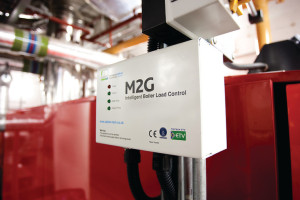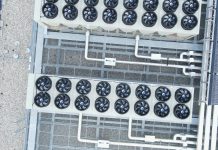 With sustained pressure to drive down operating costs and reduce carbon emissions, the healthcare sector continues to explore new ways to improve its energy efficiency. Two NHS Trusts have recently taken advantage of boiler load optimisation control to achieve significant savings in gas consumption, says Sabien in this sponsored post.
With sustained pressure to drive down operating costs and reduce carbon emissions, the healthcare sector continues to explore new ways to improve its energy efficiency. Two NHS Trusts have recently taken advantage of boiler load optimisation control to achieve significant savings in gas consumption, says Sabien in this sponsored post.
As NHS Tayside’s energy co-ordinator John Ruddy explained: “Delivering cost savings is a key area of focus for NHS Tayside. Reducing heating costs is always paramount due to the high heating demand within the healthcare sector.”
In order to reduce its heating costs NHS Tayside installed Sabien M2G boiler load optimisation controls on Hamworthy Wessex 200HE, Hoval UltraGas 500 and Hamworthy Purewell Classic boilers at Kings Cross Hospital in Dundee. Sabien’s M1G was also installed to the hospital’s direct fired hot water heaters.
Energy consumption was then measured, compared to previous consumption using Degree Day data to allow for weather variation. Following a detailed measurement and verification project, average fuel savings of 7% were delivered with a payback of 1.8 years and an annual reduction in CO2 emissions of 45 tonnes.
“There are additional benefits over and above the cost savings,” Ruddy continued. “The installation has no impact on clinical practices – enabling all areas of the hospital to be functioning as business as usual, whilst the installations are being completed. Furthermore, with varied building stock, boiler plant and building management systems across the estate, M2G can be deployed regardless, ensuring estate wide savings are captured,” he added.
A similar approach was adopted by Northumbria Healthcare NHS Foundation Trust, where Sabien was installed on seven boilers in three buildings – Northumbria House, Alnwick Infirmary and Blyth Community Hospital – providing a representative sample of the buildings within the Trust’s estate.
The energy consumption of the boilers was then measured for a period of one month and adjusted in line with Degree Day data from the local weather station. Analysis of the data, carried out in line with the International Performance Measurement & Verification Protocol (IPMVP), showed that savings in gas consumption ranged from 4% to 9% with an average of 5% across all of the boilers – delivering a projected payback of 3.7 years. The boilers ranged in size and included newly installed Viessmann Vitocrossal 300 and Remeha P420 boilers.
Mike Blades, energy and sustainability officer for Northumbria Healthcare NHS Foundation Trust said: “I am very pleased with the results of the project. What surprised me most was the level of savings achieved on our modern high efficiency boilers.”
Crucially, the M2G was operating alongside, and in harmony with, the existing controls so that the savings were in addition to those already being achieved.
During the measurement and verification (M&V) period the M2G is configured to toggle between ‘save’ mode and ‘bypass’ mode. In save mode the M2G is operational and makes savings, in bypass mode the M2G is bypassed and makes no savings. This then provides a comparison between save and bypass days, with adjustment using standard degree day calculations to take account of variations in outside temperature.
Further information: www.sabien-tech.co.uk
Related stories:
How the NHS cut gas costs with boiler load optimisation controls
Use the right metrics to get board’s attention on energy efficiency projects
Why are retrofit boiler controls proving so popular?
Boiler load controls save college thousands and cut CRC bill
Busting the myths of boiler controls
Click here to see if you qualify for a free subscription to the print magazine, or to renew.
Follow us at @EnergystMedia. For regular bulletins, sign up for the free newsletter.



